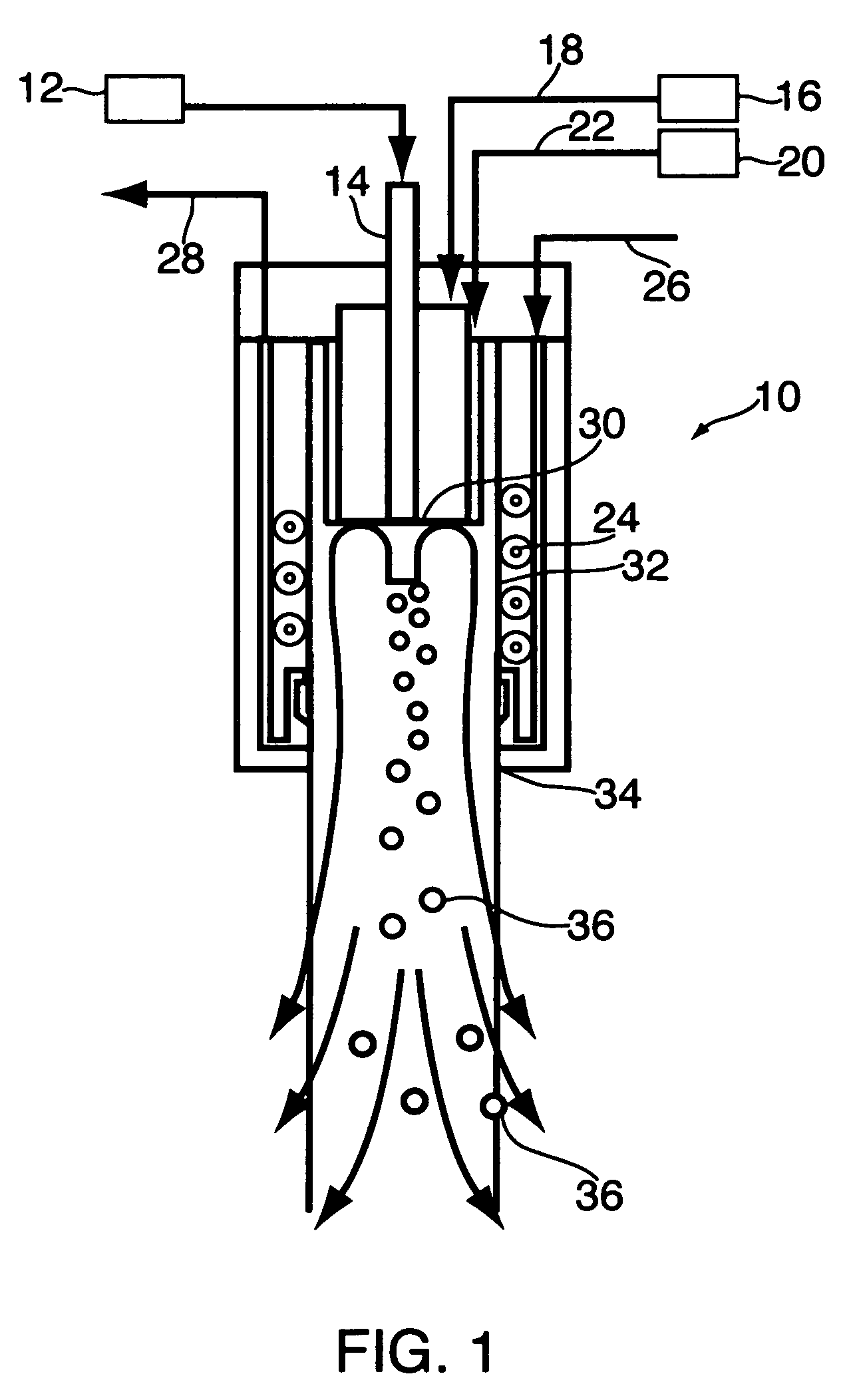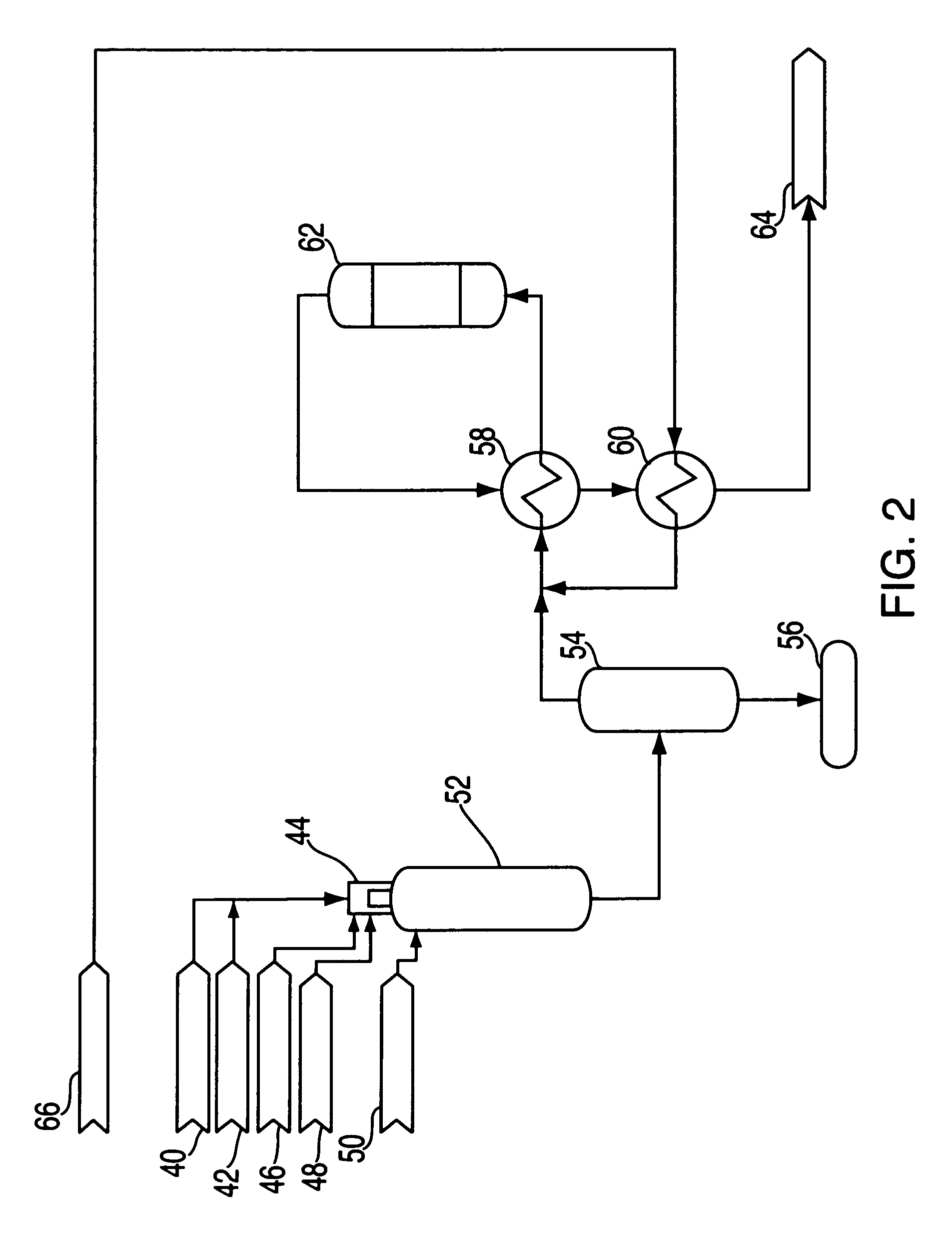Method producing metal nanopowders by decompositon of metal carbonyl using an induction plasma torch
a carbonyl and induction plasma technology, applied in the field of metal powder production, can solve the problems of inherently more costly, insufficient spherical and smooth morphology of conventional carbonyl powder, and insufficient temperature and total energy required to achieve the effect of pure ultrafine powder production, reduced temperature and total energy, and high flexibility and tolerance to processing chemistry
- Summary
- Abstract
- Description
- Claims
- Application Information
AI Technical Summary
Benefits of technology
Problems solved by technology
Method used
Image
Examples
Embodiment Construction
[0025]Although authorities have yet to agree on precise definitions of “nanopowders” and ultrafine powders, for the purposes of this specification, such powders are composed of metal particles having a typical mean particle diameter in the range of about 1 to 100 nm.
[0026]FIG. 1 represents a cross-sectional schematic view of an RF induction plasma torch 10 as per U.S. Pat. No. 5,200,595 referenced above.
[0027]As discovered by Mond and Langer during the latter part of the 19th century, nickel freely combines with and disassociates from carbon monoxide. By decomposing nickel carbonyl (Ni(CO)4), an exquisitely pure form of nickel can be produced. The main reaction is:
Ni(CO)4)→Ni+4CO
[0028]Due to the high amount of energy available in the resultant plasma (64 kW) and the low energy required to decompose nickel carbonyl into nickel and carbon monoxide, the induction plasma torch 10 provides an excellent platform to generate nickel and other metal nanopowders.
[0029]Since the decomposition ...
PUM
| Property | Measurement | Unit |
|---|---|---|
| temperature | aaaaa | aaaaa |
| mean particle diameter | aaaaa | aaaaa |
| operating temperature | aaaaa | aaaaa |
Abstract
Description
Claims
Application Information
 Login to View More
Login to View More - R&D
- Intellectual Property
- Life Sciences
- Materials
- Tech Scout
- Unparalleled Data Quality
- Higher Quality Content
- 60% Fewer Hallucinations
Browse by: Latest US Patents, China's latest patents, Technical Efficacy Thesaurus, Application Domain, Technology Topic, Popular Technical Reports.
© 2025 PatSnap. All rights reserved.Legal|Privacy policy|Modern Slavery Act Transparency Statement|Sitemap|About US| Contact US: help@patsnap.com



